Angor Wat 吳哥窟
|
|
Angkor Wat was built in 1112 by king Surayavarman II. It was dedicated to the Hindu God Vishnu but was abandoned in 1431. |
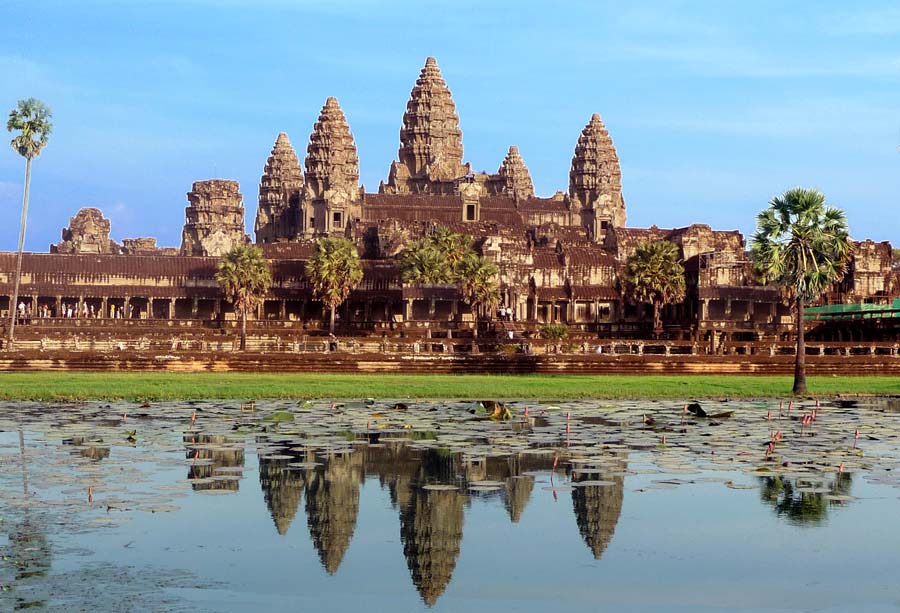
|
|
Over the centuries, Angkor Wat succumbed to the encroaching jungle. Local monks continued to pray there but it was not known to the Western world until 1860 when a French botanist Henri Mahout stumbled across the lost temples and made his discovery known. |
|

|
|
The temples are encircled by moats representing the ocean surrounding the mountain. |
|
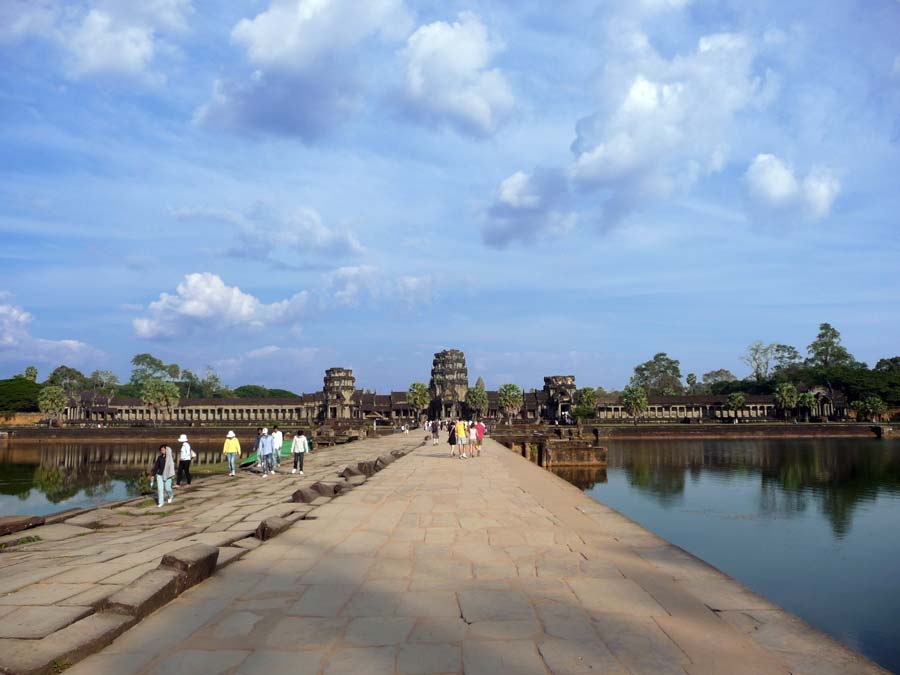
|
|
A causeway that leads to the west gopura entrance. |
|
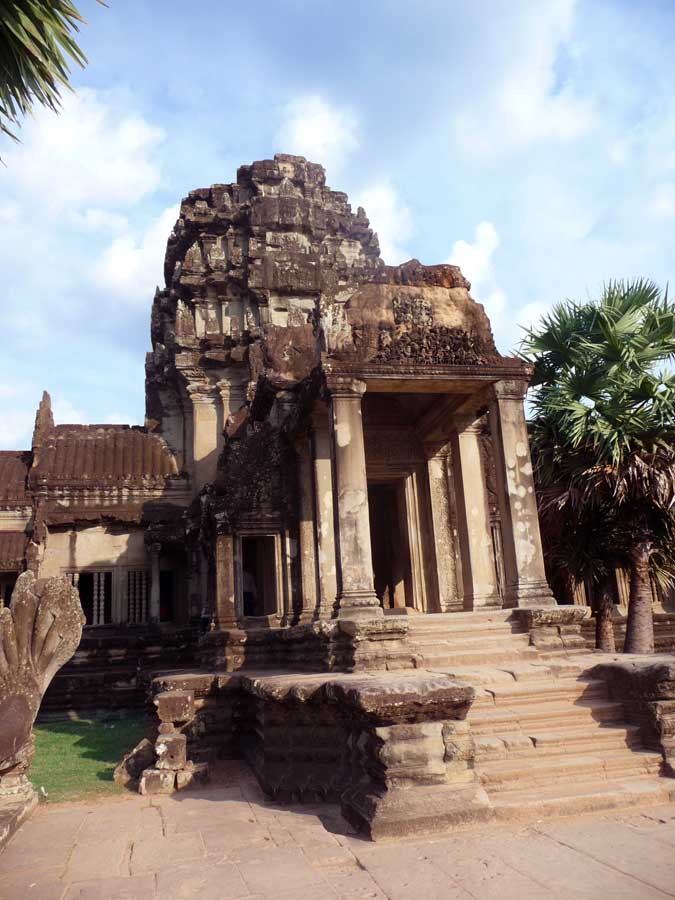
|
|
One of the three gopuras entrances on the west. |
|
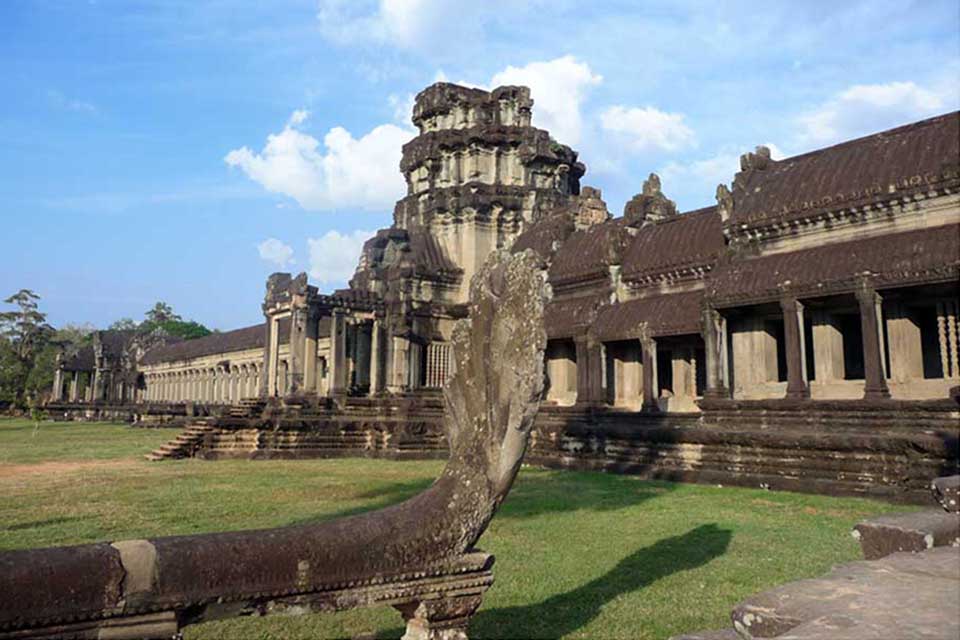
|
|
Nāgas are protecting the ground of Angkor Wat. |
|
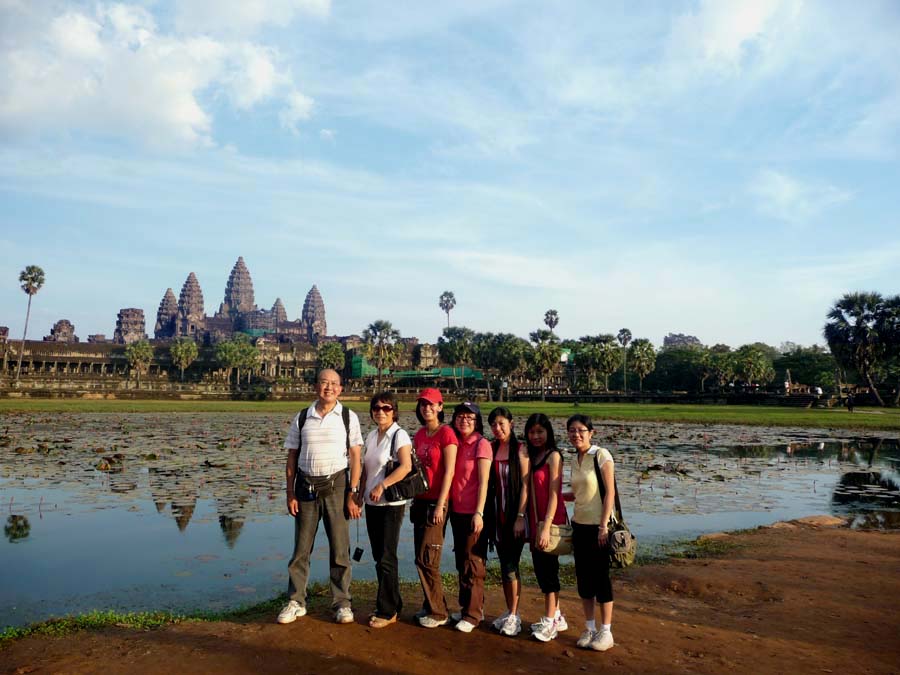
|
|
Angkor Wat incorporated more than 60 temples and had five main towers, which are depicted on the Cambodian flag. |
|

|
|
At the center of the temple stands a quincunx of towers. A quincunx is a geometric pattern consisting of five coplanar points, four of them forming a square or rectangle and a fifth at its center. |
|
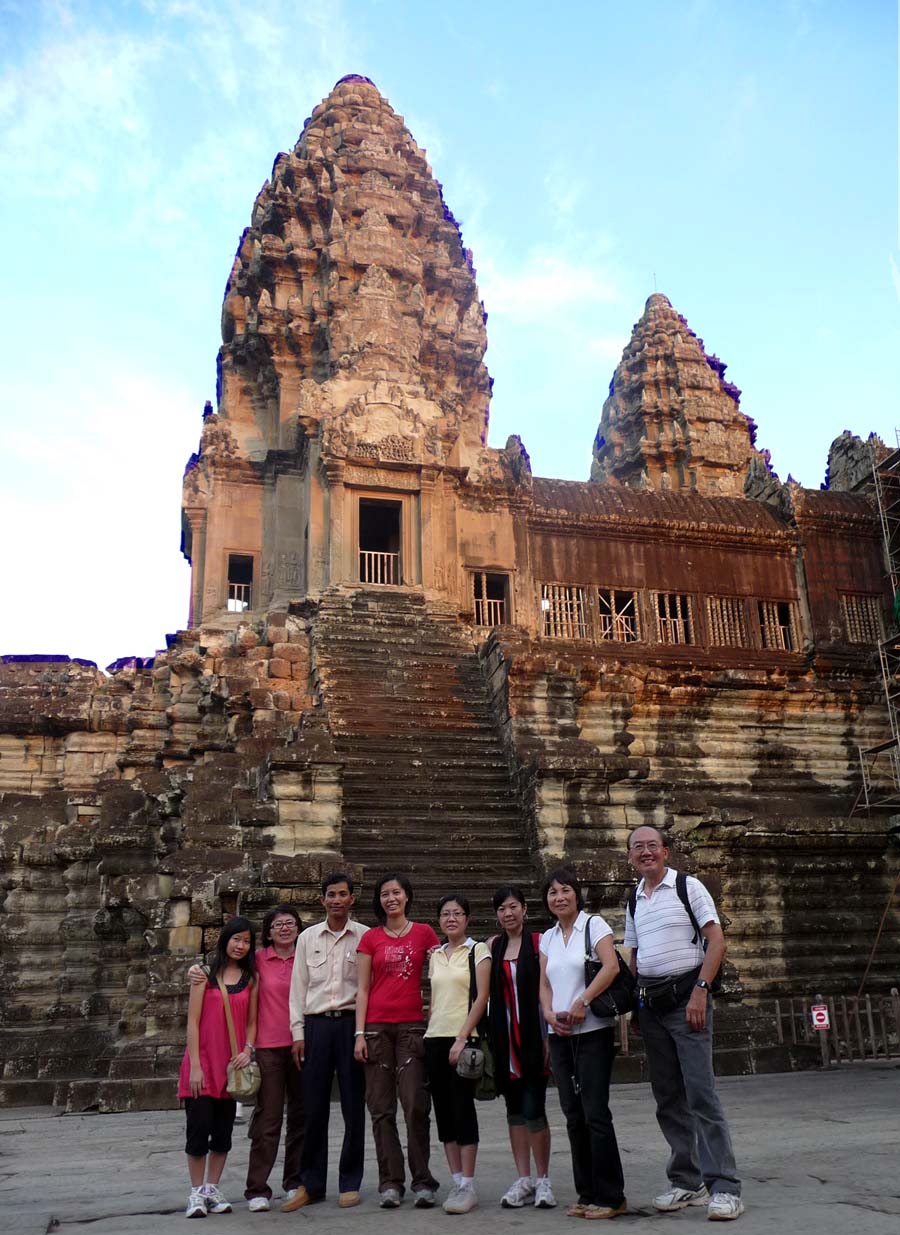
|
|
The towers represent the five peaks of Mount Meru, the home of the Hindu gods. The tallest of which was the home of Vishnu, 210 feet above ground and has a 70° slope. |
|
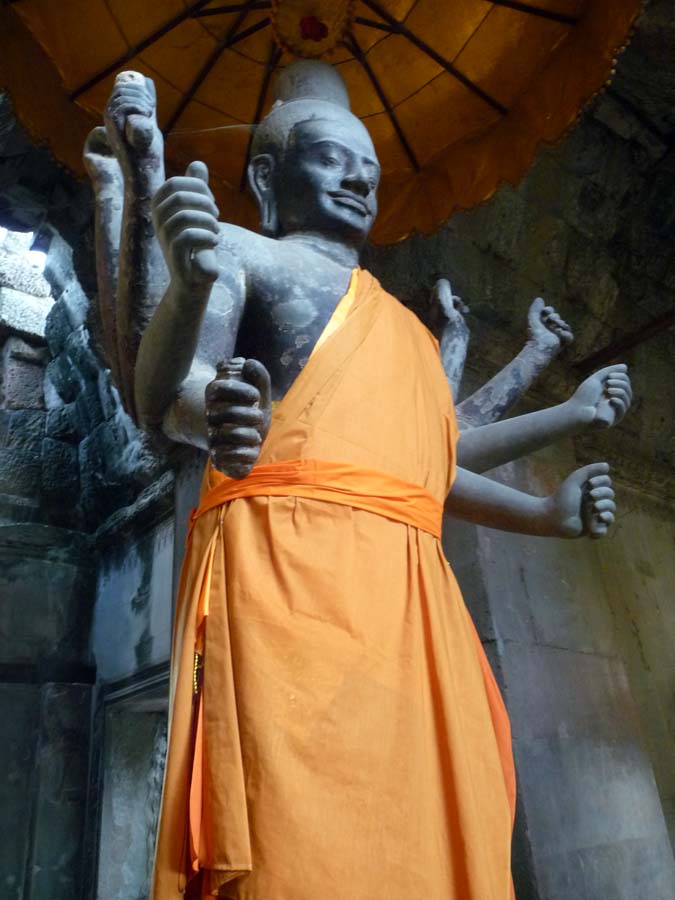
|
|
Eight-armed Vishnu at the entrance of the first gallery. |
|
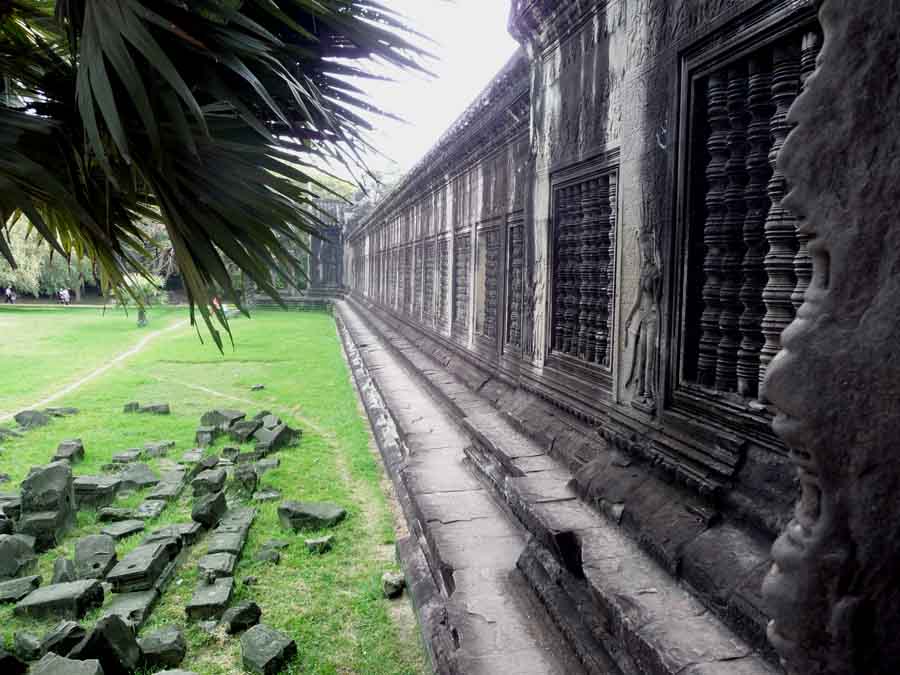
|
|
Remarkable bas-relief covers most of the walls in Angkor Wat. |
|

|
|
Apsara, the celestial dancers can be found all over the inside wall. |
|
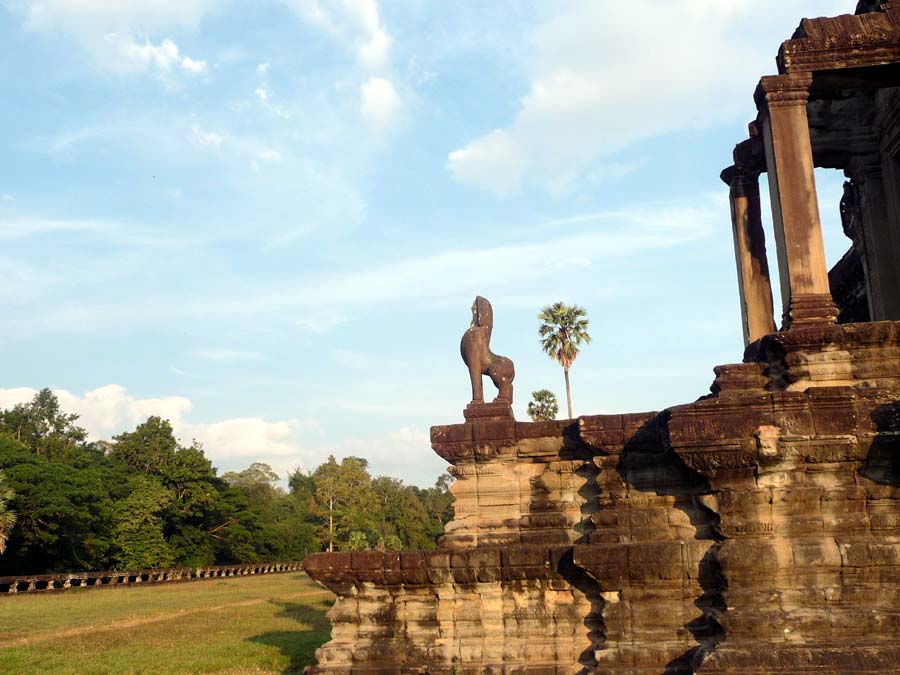
|
|
Lions guard the outside of the temples. |
|

|
|
Unlike other great palaces, monuments and structures in the world, Angor Wat was not built for the king or for the human beings but to serve as a temple for the gods. |
|

|
|
The king lived in huts of wood and straw in the grounds of the temples or near to them, but never in the temples themselves. |
|
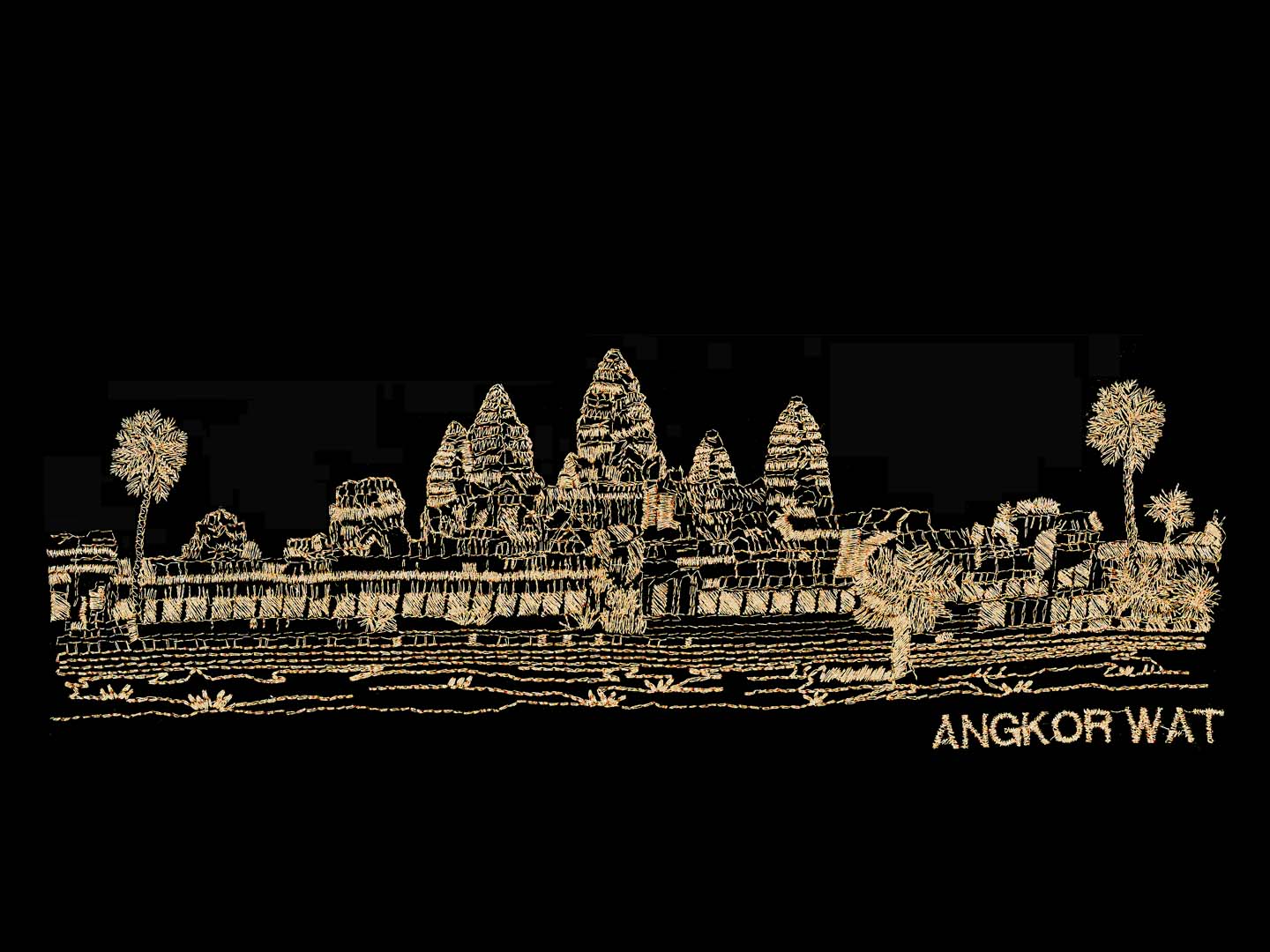
|
|
And this is the legacy of Angkor Wat. |
|